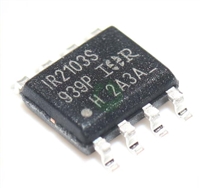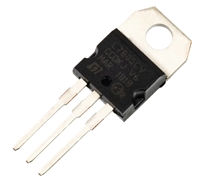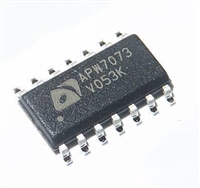Functional Description
LANCAM B Family
FUNCTIONAL DESCRIPTION
The LANCAM is a Content Addressable Memory (CAM)
with 16-bit I/O for network address filtering and
translation, virtual memory, data compression, caching,
and table lookup applications. The memory consists of
static CAM, organized in 64-bit data fields. Each data field
can be partitioned into a CAM and a RAM subfield on
16-bit boundaries. The contents of the memory can be
randomly accessed or associatively accessed by the use of
a compare. During automatic comparison cycles, data in
the Comparand register is automatically compared with
the “Valid” entries in the memory array. The Device ID
can be read using a TCO PS instruction (see Persistent
Source Register Bits on page 24).
Data Movement (Read/Write)
Data can be moved from one of the data registers (CR,
MR1, or MR2) to a memory location that is based on the
results of the last comparison (Highest-Priority Match or
Next Free), or to an absolute address, or to the location
pointed to by the active Address register. Data can also be
written directly to the memory from the DQ bus using any
of the above addressing modes. The Address register may
be directly loaded and may be set to increment or
decrement, allowing DMA-type reading or writing from
memory.
Configuration Register Sets
Two sets of configuration registers (Control, Segment
Control, Address, Mask Register 1, and Persistent Source
and Destination) are provided to permit rapid context
switching between foreground and background activities.
The currently active set of configuration registers controls
writes, reads, moves, and compares. The foreground set
typically would be pre-loaded with values useful for
comparing input data, often called filtering, while the
background set would be pre-loaded with values useful for
housekeeping activities such as purging old entries.
Moving from the foreground task of filtering to the
background task of purging can be done by issuing a
single instruction to change the current set of
configuration registers. The match condition of the device
is reset whenever the active register set is changed.
Data Input and Output Characteristics
The data inputs and outputs of the LANCAM are
multiplexed for data and instructions over a 16-bit I/O bus.
Internally, data is handled on a 64-bit basis, since the
Comparand register, the Mask registers, and each memory
entry are 64 bits wide. Memory entries are globally
configurable into CAM and RAM segments on 16-bit
boundaries, as described in US Patent 5,383,146 assigned
to MUSIC Semiconductors. Seven different CAM/RAM
splits are possible, with the CAM width going from one to
four segments, and the remaining RAM width going from
three to zero segments. Finer resolution on compare width
is possible by invoking a Mask register during a compare,
which allows global masking on a bit basis. The CAM
subfield contains the associative data, which enters into
compares, while the RAM subfield contains the associated
data, which is not compared. In LAN bridges, the RAM
subfield could hold, for example, port-address and aging
information related to the destination or source address
information held in the CAM subfield of a given location.
In a translation application, the CAM field could hold the
dictionary entries, while the RAM field holds the
translations, with almost instantaneous response.
Control Register
The active Control register determines the operating
conditions within the device. Conditions set by this
register’s contents are reset, enable or disable Match flag,
enable or disable Full flag, CAM/RAM partitioning,
disable or select masking conditions, disable or select
auto-incrementing or auto-decrementing the Address
register, and select Standard or Enhanced mode. The
active Segment Control register contains separate counters
to control the writing of 16-bit data segments to the
selected persistent destination, and to control the reading
of 16-bit data segments from the selected persistent
source.
Validity Bits
Each entry has two validity bits associated with it to define
its particular type: Empty, Valid, Skip, or RAM. When
data is written to the active Comparand register, and the
active Segment Control register reaches its terminal count,
the contents of the Comparand register are automatically
compared with the CAM portion of all the valid entries in
the memory array. For added versatility, the Comparand
register can be barrel-shifted right or left one bit at a time.
A Compare instruction then can be used to force another
compare between the Comparand register and the CAM
portion of memory entries of any one of the four validity
types. After a Read or Move from Memory operation, the
validity bits of the location read or moved are copied into
the Status register, where they can be read using
Command Read cycles.
Mask Registers
There are two active Mask registers at any one time, which
can be selected to mask comparisons or data writes. Mask
Register 1 has both a foreground and background mode to
support rapid context switching. Mask Register 2 does not
have this mode, but can be shifted left or right one bit at a
time. For masking comparisons, data stored in the active
selected Mask register determines which bits of the
comparand are compared against the valid contents of the
memory. If a bit is set HIGH in the Mask register, the same
bit position in the Comparand register becomes a “don’t
Rev. 5.1
5










 深入解读IR2103资料手册:引脚说明、电气参数及替换型号推荐
深入解读IR2103资料手册:引脚说明、电气参数及替换型号推荐

 L7805CV手册解读:引脚说明、替代型号推荐、好坏检测
L7805CV手册解读:引脚说明、替代型号推荐、好坏检测

 MMBT5551资料手册解读:电气参数、替换型号推荐
MMBT5551资料手册解读:电气参数、替换型号推荐

 APW7073资料手册解读:产品特性、引脚说明、替换型号推荐
APW7073资料手册解读:产品特性、引脚说明、替换型号推荐
